The Southern Hot List
The Southern Hot List
Rising stars—from the Gridiron to the Runway—who are shaping the South right now
The Scene Stealer
Danny McBride
Actor and writer Danny McBride might be best known for the HBO series Eastbound & Down, in which he played the profane Kenny Powers, a washed-up major leaguer struggling to get back in the game. In real life, though, McBride is one of Hollywood’s key players. With roles in films like Tropic Thunder, Pineapple Express, and This Is the End, the thirty-nine-year-old has become a global comedy brand, but when it comes to writing his own stories, he has definitively stayed in the South. Eastbound & Down played out largely across the Carolinas, and late last year McBride finished shooting a new HBO series, Vice Principals, which was filmed in Charleston and set in the fictional town of North Jackson, South Carolina. “You just write what you know,” says McBride, a Georgia native raised in Virginia. “Me and the guys I create these stories with all met in the South, and we grew up in the South. It just feels right to set our stories here.” Those collaborators—including Jody Hill, David Gordon Green, and Ben Best—have all been working together since they met at the University of North Carolina School of the Arts. Far from the entertainment hubs of New York and Los Angeles, the budding filmmakers bonded over feeling like industry outsiders. “When you’re in that position, you want to have each other’s backs,” McBride says. “We’re always there for each other.” If their track record is any indication of what’s to come, that’s good news for the rest of us.

The Farm Aider
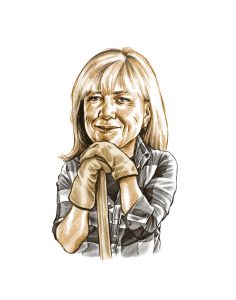 Mary Berry
Mary Berry
In recent years, Community Supported Agriculture mushroomed, small-batch foods gained cachet, and “farm to table” became a buzzword. Admirable steps toward a healthy and sustainable food supply, says Mary Berry, the daughter of the revered Kentucky poet, essayist, and longtime farmer Wendell Berry. But they’re not nearly enough. “The food movement has been valuable, absolutely,” acknowledges the younger Berry, who farmed full-time for thirty-two years. “It just hasn’t made a difference in farm country. We haven’t managed to put an economy around local production for local markets.” To help remedy that, in 2011 she founded the Berry Center in New Castle, Kentucky, a nonprofit that focuses on issues confronting small farmers. The center helped launch a degree program in farming and agroecology at St. Catharine College, in Springfield, Kentucky, and the staff is also studying ways to try to match the ravenous demand for locally produced food in Louisville with supply from surrounding farms—a system that regions around the country could emulate. “We need to fix the broken connection between urban places and rural places,” Berry says. “We all need to be agrarians.”
The Pigskin Provocateur
Clay Travis
 Depending on whom you ask, Clay Travis is either the most hated man or the most loved man in college football. Either way, he’s without a doubt one of its most outspoken voices. The founder of the must-read website Outkick the Coverage, Travis regularly works his readers into a lather with pot-stirring posts that encompass the sport’s entire cultural landscape (exhibit A: the Dumbest Fan Bases in America series). “College football fans take negative coverage as something personal,” he says. “It’s an affront to their integrity.” A Nashville native and lifelong Tennessee Volunteers fan, the thirty-six-year-old started writing about college football in 2004, eventually launching OKTC and growing it to a position of immense popularity. Fox Sports took notice in 2015, giving OKTC a landing pad on its site as well as tapping Travis for an in-studio role on its weekly Countdown to Kickoff show. Much of Travis’s appeal stems from his fearlessness. But he’s also knowledgeable. The author of two books on SEC football, he lays out his often contrarian viewpoints methodically and succinctly—no surprise when you consider that he’s a trained lawyer who gave up practicing to raise the hackles of fans everywhere.
Depending on whom you ask, Clay Travis is either the most hated man or the most loved man in college football. Either way, he’s without a doubt one of its most outspoken voices. The founder of the must-read website Outkick the Coverage, Travis regularly works his readers into a lather with pot-stirring posts that encompass the sport’s entire cultural landscape (exhibit A: the Dumbest Fan Bases in America series). “College football fans take negative coverage as something personal,” he says. “It’s an affront to their integrity.” A Nashville native and lifelong Tennessee Volunteers fan, the thirty-six-year-old started writing about college football in 2004, eventually launching OKTC and growing it to a position of immense popularity. Fox Sports took notice in 2015, giving OKTC a landing pad on its site as well as tapping Travis for an in-studio role on its weekly Countdown to Kickoff show. Much of Travis’s appeal stems from his fearlessness. But he’s also knowledgeable. The author of two books on SEC football, he lays out his often contrarian viewpoints methodically and succinctly—no surprise when you consider that he’s a trained lawyer who gave up practicing to raise the hackles of fans everywhere.
The Whiskey Wunderkind
Marianne Barnes
Marianne Barnes isn’t your typical bourbon prodigy. Strike one: She grew up in Kentucky’s then-bone-dry Oldham County. Strike two: The number of females who had achieved the title of master bourbon distiller since Prohibition could be counted on, well, no hands. Until last spring, that is, when Will Arvin and Wesley Murry, a pair of Lexington-area investors, lured her away from her existing dream job, as a master taster for Brown-Forman (the parent company to such venerable labels as Woodford Reserve and Jack Daniel’s), to help them launch a new brand from scratch. One of the factors that clinched her leap of faith: The company will produce its as-yet-unnamed bourbon (made with heirloom white corn and other Kentucky-grown grains) on the restored eighty-three-acre Woodford County site of the Old Taylor Distillery, built in 1887 by Colonel E. H. Taylor, Jr., a towering figure in bourbon lore. Complete with a limestone castle, a sunken garden, and a 540-foot-long warehouse, the distillery had sat all but abandoned for the last forty years. “I felt almost challenged by the site itself to be a part of the team to bring it back to life,” says Barnes, who is twenty-nine. And if others want to view her as a trailblazer for women in bourbon distilling, that’s fine, too. “It’s about time that it happened,” she says. “It’s been a fraternity for a very long time.”
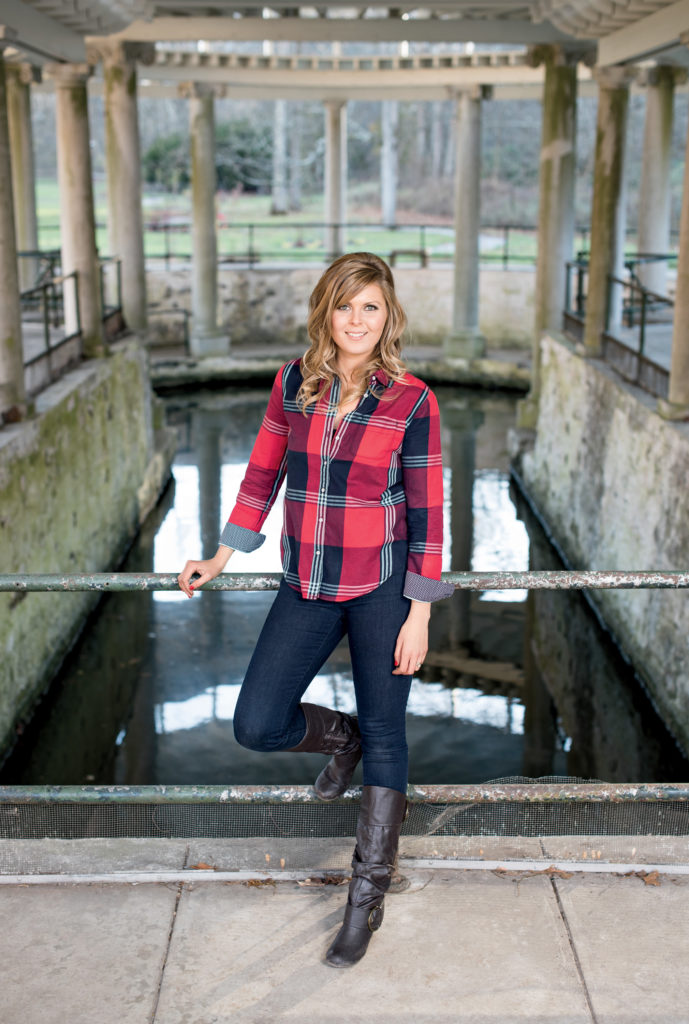
Photo: Andrew Hyslop
Bourbon Boss
Marianne Barnes at the Old Taylor Distillery’s springhouse, in Frankfort, Kentucky.
The Bar Raiser
Greg Best
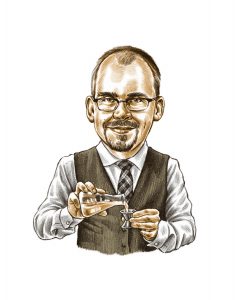 It wasn’t all that long ago that people were swilling cosmos and apple martinis and calling them cocktails. Today, if you live in Atlanta and know the difference between a flip and a fizz, you should probably thank Greg Best. In 2005, the pioneering bartender persuaded chef Linton Hopkins to let him overhaul the drinks program at the city’s Restaurant Eugene. “I started poring over old cocktail books, and working with the chef to push the boundaries of what was familiar,” Best says. That was just the beginning. Holeman and Finch Public House—birthed out of Best’s meteoric success at Eugene—and the innovative concoctions he introduced there would become game changers, earning Best two consecutive James Beard Award nominations for Outstanding Bar Program and helping redefine the way we drink. With his latest project, the Ticonderoga Club, a partnership that includes his former H&F cohort Regan Smith, Best is focused on putting hospitality front and center. No flash, just well-made drinks, in a comfortable setting that feels like a bar should feel—friendly. “We wanted to create a place that harkens back to that timeless tavern,” Best says. “I want something that will never go away—I want the manhattan.”
It wasn’t all that long ago that people were swilling cosmos and apple martinis and calling them cocktails. Today, if you live in Atlanta and know the difference between a flip and a fizz, you should probably thank Greg Best. In 2005, the pioneering bartender persuaded chef Linton Hopkins to let him overhaul the drinks program at the city’s Restaurant Eugene. “I started poring over old cocktail books, and working with the chef to push the boundaries of what was familiar,” Best says. That was just the beginning. Holeman and Finch Public House—birthed out of Best’s meteoric success at Eugene—and the innovative concoctions he introduced there would become game changers, earning Best two consecutive James Beard Award nominations for Outstanding Bar Program and helping redefine the way we drink. With his latest project, the Ticonderoga Club, a partnership that includes his former H&F cohort Regan Smith, Best is focused on putting hospitality front and center. No flash, just well-made drinks, in a comfortable setting that feels like a bar should feel—friendly. “We wanted to create a place that harkens back to that timeless tavern,” Best says. “I want something that will never go away—I want the manhattan.”
The Novel Voice
 Katy Simpson Smith
Katy Simpson Smith
“The fiction that I love is fiction that takes me to places that are completely unexpected and that I don’t have any experience of,” says the author Katy Simpson Smith. “So when I started writing, it seemed natural to go to places that I wanted to explore.” For Smith, a thirty-year-old Mississippian living in New Orleans, those places existed deep in America’s past. Her 2014 debut novel, The Story of Land and Sea, is set during the American Revolution on the North Carolina coast and generated some of the year’s biggest buzz. Her next book, Free Men, out in February, follows an escaped slave, a white orphan, and a Creek Indian being tracked for murder in the late eighteenth century in what is now Alabama. By giving voice to such disparate characters, Smith, who holds a PhD in history, continues to use her evocative prose to explore some of America’s thorniest questions about freedom, race, love, and guilt. But the most important lessons Smith has learned from writing fiction, she says, center around how to relate to people different from yourself. “And those lessons,” she says, “can be applied to living in the South today.”
The Shot Caller
Jeff Nichols
 Director and screenwriter Jeff Nichols grew up in Arkansas, attended the University of North Carolina School of the Arts, and has set almost all of his films in the South—from the Mississippi River island where we find Matthew McConaughey in 2012’s Mud, to the highways strung out across Arkansas in the sci-fi thriller Midnight Special (opening in March). Nichols says he doesn’t feel a responsibility to base his films in the region; it’s just where he finds the best material. “The only thing that matters to me is telling a good story,” he says. With his current project, Loving, he might be telling the most powerful one yet. Based on Mildred and Richard Loving, the interracial couple whose 1958 marriage led to the seminal 1967 civil rights case Loving v. Virginia, it tackles both race and marriage equality at once. Motivated to look into the story by Martin Scorsese, who is now an executive producer, Nichols sees Loving as the perfect vehicle to address some of the nation’s most difficult issues. “The best way to talk about something as socially charged as race and as politically charged as marriage equality is to show true people dealing with it,” Nichols says. “I think it’s going to blow people away.”
Director and screenwriter Jeff Nichols grew up in Arkansas, attended the University of North Carolina School of the Arts, and has set almost all of his films in the South—from the Mississippi River island where we find Matthew McConaughey in 2012’s Mud, to the highways strung out across Arkansas in the sci-fi thriller Midnight Special (opening in March). Nichols says he doesn’t feel a responsibility to base his films in the region; it’s just where he finds the best material. “The only thing that matters to me is telling a good story,” he says. With his current project, Loving, he might be telling the most powerful one yet. Based on Mildred and Richard Loving, the interracial couple whose 1958 marriage led to the seminal 1967 civil rights case Loving v. Virginia, it tackles both race and marriage equality at once. Motivated to look into the story by Martin Scorsese, who is now an executive producer, Nichols sees Loving as the perfect vehicle to address some of the nation’s most difficult issues. “The best way to talk about something as socially charged as race and as politically charged as marriage equality is to show true people dealing with it,” Nichols says. “I think it’s going to blow people away.”
The Memory Keeper
Joseph McGill, Jr.
“I’ve laid my head in a lot of places where our enslaved ancestors dwelled,” says Joseph McGill, Jr. Indeed, since he founded the Slave Dwelling Project in 2010, McGill has slept more than a hundred nights in some seventy-five structures that once housed the enslaved, in sixteen states (so far), including five up North. The nonprofit’s goals are straightforward: to spread the word that many of those houses still stand; to bolster efforts to salvage them; and, perhaps most meaningfully, to make sure that in the nation’s collective memory, the homes of history’s famous and powerful do not overshadow those who made the bricks for those homes, or whose backbreaking toil enabled those planters or merchants or statesmen, Southern or otherwise, to become wealthy. “All of this should be incorporated into the story,” says McGill, who also conducts tours at Charleston, South Carolina’s Old Slave Mart Museum and of the restored slave cabins at Magnolia Plantation. “There’s a national correction that needs to be made. We’re getting a whole lot better, but we’re not there yet. These places make the institution of slavery real.” Although McGill began overnighting in slave quarters alone, often braving insects and stifling heat, nowadays others usually join him—at times, the descendants of slaves and of slave owners spending the night together.
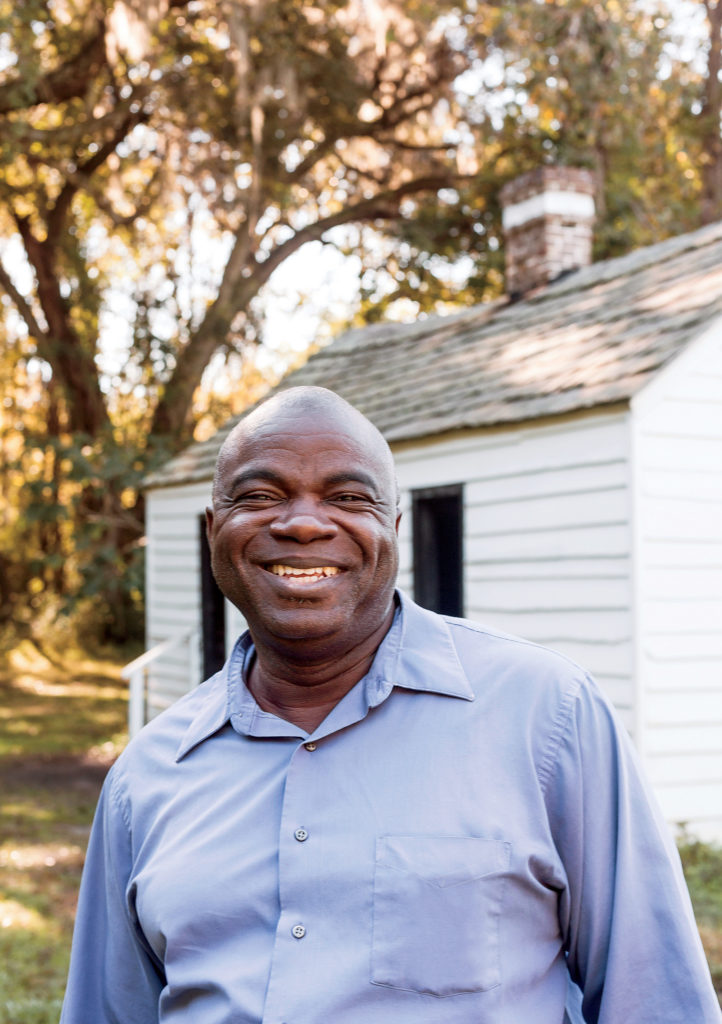
Photo: Margaret Houston
Joseph McGill, Jr., in front of a restored slave cabin at Magnolia Plantation, in Charleston, South Carolina.
The New Face of Hip-Hop
Raury Tullis
 He’s a fearless nineteen-year-old wild child, a boho-hippie from Stone Mountain, Georgia, with funny—or cool, take your pick—taste in hats. His debut studio album, All We Need, is a mélange of sounds—Southern hip-hop, folk, gospel—that showcase the rapper-singer’s double-headed flair for grand theatrics and his ability to captivate with the most intimate whisper. He lists everyone from Sade to Bon Iver as influences, and his star-making turns on late-night television wowed not just Stephen Colbert and James Corden but also their all-ages audiences. But what’s most refreshing about Raury Tullis, or Raury as he’s known, is his front-and-center idealism, using his very public platform to champion societal change. “I want to speak peace and love,” he says, “and I think a lot of kids are awake to what’s going on in society. I stand for all people that are oppressed.” Cynics may scoff, but he’s making a good case that his generation isn’t nearly as self-obsessed as some would believe. “I’ve been given a wonderful gift to make music,” Tullis says, “so I feel like I have an obligation to yell and yell and yell so that I get heard.”
He’s a fearless nineteen-year-old wild child, a boho-hippie from Stone Mountain, Georgia, with funny—or cool, take your pick—taste in hats. His debut studio album, All We Need, is a mélange of sounds—Southern hip-hop, folk, gospel—that showcase the rapper-singer’s double-headed flair for grand theatrics and his ability to captivate with the most intimate whisper. He lists everyone from Sade to Bon Iver as influences, and his star-making turns on late-night television wowed not just Stephen Colbert and James Corden but also their all-ages audiences. But what’s most refreshing about Raury Tullis, or Raury as he’s known, is his front-and-center idealism, using his very public platform to champion societal change. “I want to speak peace and love,” he says, “and I think a lot of kids are awake to what’s going on in society. I stand for all people that are oppressed.” Cynics may scoff, but he’s making a good case that his generation isn’t nearly as self-obsessed as some would believe. “I’ve been given a wonderful gift to make music,” Tullis says, “so I feel like I have an obligation to yell and yell and yell so that I get heard.”
The Next Billy Reid
 Wes Gordon
Wes Gordon
Wes Gordon’s feminine-with-an-edge designs—an impeccably cut coat, a pencil skirt in luxurious lace, a casually elegant slip dress—have attracted the likes of Gwyneth Paltrow, Anne Hathaway, Christina Hendricks, Solange Knowles, and Michelle Obama. But as his growing fan base can attest, you need not be a celebrity to fall for the Ralph Lauren–esque romance and wearability of a Wes Gordon creation. The twenty-nine-year-old designer laid the groundwork for a career in fashion while growing up in Atlanta—taking after-school sewing lessons from a local seamstress and figure-painting classes at the High Museum of Art. In 2005, he crossed the pond to attend the prestigious Central Saint Martins art school in London, the alma mater of Stella McCartney and the late Alexander McQueen, and went on to intern for industry icons Oscar de la Renta and Tom Ford before striking out on his own. Still, it’s Gordon’s Georgia upbringing that underpins his inspiration. “Southern women approach fashion really confidently,” he says. “Whether it’s a beautiful old home in Buckhead, a garden, or an outfit, they take great pride in the details.”
The Multi-Threat Musician
Rhiannon Giddens
Singer, songwriter, and instrumentalist Rhiannon Giddens makes it her mission to perform a musical miracle: She brings lost sounds back to life. Raised in North Carolina and trained as an opera singer at Oberlin College, Giddens first made her mark as a member of the 2010 Grammy-winning Carolina Chocolate Drops, reinterpreters of the often-overlooked African American string-band traditions of the 1920s and ’30s. Now touring in support of her first solo outing, 2015’s Tomorrow Is My Turn, Giddens is on a continuing quest to connect history to music and serve it up fresh. With powerful and exquisite versions of material made famous by Nina Simone, Patsy Cline, and Odetta, among others, the album continues Giddens’s practice of using music to transcend genre and race, seemingly without breaking a sweat. “To me Dolly Parton and [1930s blueswoman] Geeshie Wiley aren’t that different,” Giddens says. “It’s all American music, and look how it works together! That’s because it’s coming from a common well.” Giddens’s classically honed voice is a wonder. Hear it in person as she tours this spring, including four February performances of Swimming in Dark Waters: Other Voices of the American Experience, an exploration of Southern songs of protest and resistance, both old and new.
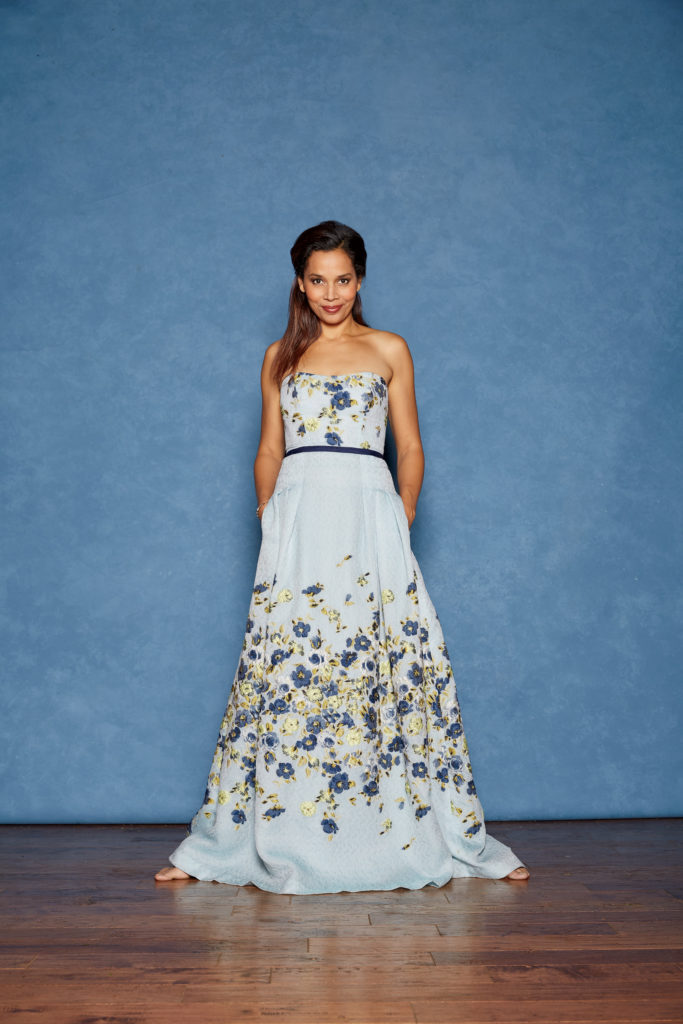
Photo: John Huba
Powerful Voice
Rhiannon Giddens shines before a show in Beacon, New York. Dress by Carolina Herrera. Bracelet by David Yurman.
The Kitchen Magicians
Seven enterprising chefs who are following their passions at their innovative new restaurants
Willa Jean, in New Orleans, brings to mind Grandma’s kitchen—taken over by a pair of the country’s finest pastry chefs. Lisa White and Kelly Fields, who lent her own grandmother’s name to the restaurant, pay tribute to generations past with biscuits, skillet cornbread, and sandwiches heaped with fried chicken and griddled meat loaf. Joseph Lenn won a James Beard Award for his work at the ultraluxe Blackberry Farm resort in Walland, Tennessee. Named for his great-uncle, the forthcoming J. C. Holdway will bring his confit guinea hen with dumplings and other tradition-inspired dishes to a more relaxed setting in Knoxville. “It’s a much smaller kitchen, which I like,” Lenn says. “I can keep my eye on everything.” Florence, South Carolina, native Elliott Moss grew up on catfish stew, gravy-like hash, chicken bog, and whole-hog barbecue. Formerly the chef at the lauded Admiral in Asheville, North Carolina, he is introducing hungry crowds to those childhood staples at the new Buxton Hall Barbecue, along with creative sides such as sorghum-laced baked bean casserole and grits with gravy and popcorn. Jeremiah Langhorne spent years tweezing beachside herbs and flowers onto dishes as the hardworking but little-known chef de cuisine at the trendsetting McCrady’s in Charleston, South Carolina. Now, at the Dabney in Washington, D.C., the Charlottesville, Virginia, native brings the same work ethic to the bounty of the Mid-Atlantic, making vinegar from wild grapes and miso with local sunchokes. In Brunswick, Georgia, Matthew Raiford grows his own produce on land his family has owned for almost a century and a half, pairing it with other local ingredients at the Farmer & the Larder. He also feeds hungry minds by transforming his restaurant into a culinary classroom several times a month. And in Houston, P. J. Stoops has a new mission. Formerly a pioneering fishmonger who championed the pleasures of bycatch, he is now working with refugee farmers to introduce area diners to ingredients such as water spinach and makok fruit at the Thai-focused Foreign Correspondents. “We’re lucky that we can charge enough to use ingredients that are difficult to grow, or usually cost too much,” he says. “Still, we have only a few dishes over twenty dollars.”
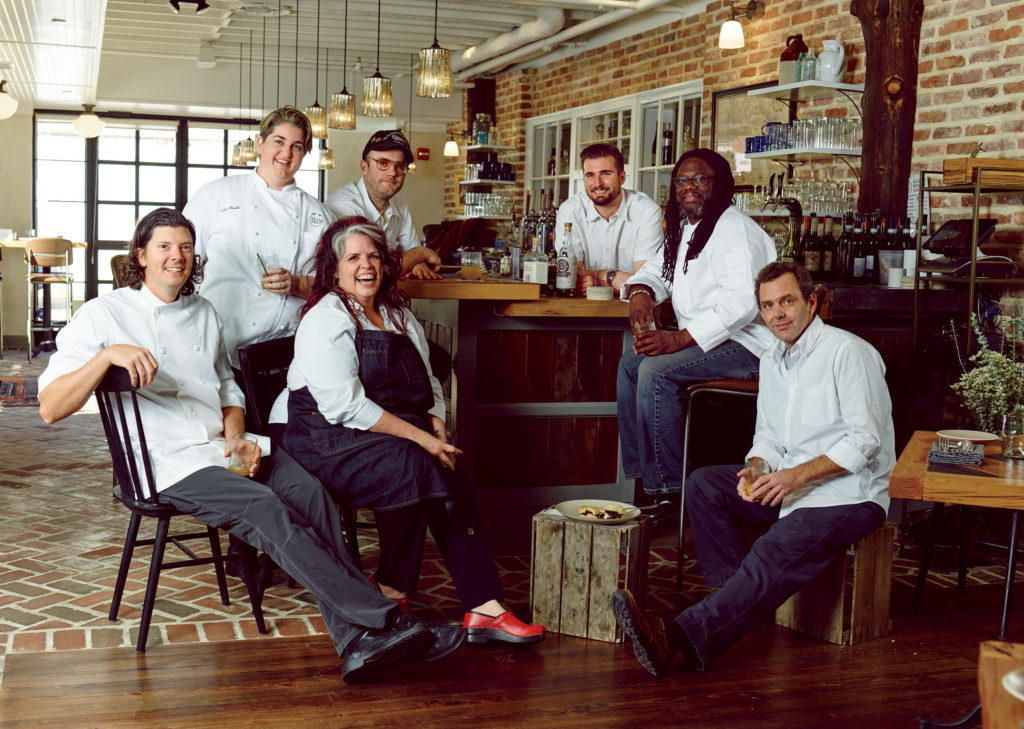
Photo: William Hereford
Chefs' Table
Left to right: Joseph Lenn, Kelly Fields, Lisa White, Elliott Moss, Jeremiah Langhorne, Matthew Raiford, and P.J. Stoops, photographed at the Dabney in Washington, D.C.
The Bayou Watchdog
Dean Wilson
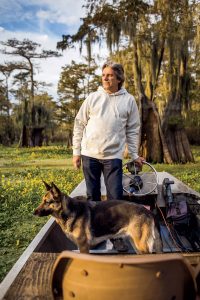
Photo: David Hanson
Standing Sentinel
STANDING SENTINEL
Dean Wilson and Shanka look out at a cypress grove in Louisiana’s Atchafalaya Basin.
“For sixteen years I made a living catching crawfish, gar, buffalo fish, catfish,” says Dean Wilson, a native of Spain who moved to Louisiana’s Atchafalaya Basin in 1984. “I thought I could make a living off the land forever.” But he soon realized that no one was doing nearly enough to protect the future of the Basin, the largest river swamp in the country and home to one of its last great tracts of forested wetlands. Then things got worse. In the early 2000s, Basin cypress trees, which hadn’t been logged for over a century, came back in vogue, most of them ending up ground into mulch sold at garden supply centers. Wilson began tailing logging trucks and boats and collecting photos of clear-cuts and lumberyards, and in 2004, he started the nonprofit Atchafalaya Basinkeeper to make his de facto watchdog position official, deploying everything from media campaigns to aerial photography to litigation to accomplish his mission. It worked: In 2008, such big-box stalwarts as Walmart, Home Depot, and Lowe’s stopped selling cypress mulch from the Basin. These days, Wilson, his wife, Cara, and their young son live on a narrow strip of dry ground near Bayou Sorrel, and he keeps a vigilant eye on anything that might disrupt the Basin’s natural balance. Sometimes the Basinkeeper is the only group making public comments to thwart or amend industry permitting. But Wilson is accustomed to being the loudest voice in the swamp. “We now have more than a thousand members of the Basinkeeper,” he says. “The bayou has people speaking for it now.”
The Record Hunter
Lance Ledbetter
 Adventurous music listeners discovered Lance Ledbetter in 2003, when his Dust-to-Digital label issued its first release, Goodbye, Babylon, an ambitious six-CD set of early American gospel culled from old 78 records that went on to receive two Grammy nominations. Since then, Dust-to-Digital has released more than sixty collections showcasing rarely heard artists from the South and beyond—from Floridian diddley bow players to Thai country groove musicians. As a teenager in LaFayette, Georgia, Ledbetter fell for punk and indie music. But it was discovering Harry Smith’s Anthology of American Folk Music as a radio DJ at Georgia State that planted the idea for Dust-to-Digital. He and his wife, April, run the business out of their Atlanta home, mining unforgettable recordings from collectors, the Library of Congress, and universities. “We’re putting out stuff no one else is really producing,” Ledbetter says. “If it’s important, if it’s underrepresented, if it needs to be shared, you just know it.” Keep an eye out for a spring release of composer and author Paul Bowles’s 1959 field recordings from Morocco and a fall collection of Mississippi blues and gospel.
Adventurous music listeners discovered Lance Ledbetter in 2003, when his Dust-to-Digital label issued its first release, Goodbye, Babylon, an ambitious six-CD set of early American gospel culled from old 78 records that went on to receive two Grammy nominations. Since then, Dust-to-Digital has released more than sixty collections showcasing rarely heard artists from the South and beyond—from Floridian diddley bow players to Thai country groove musicians. As a teenager in LaFayette, Georgia, Ledbetter fell for punk and indie music. But it was discovering Harry Smith’s Anthology of American Folk Music as a radio DJ at Georgia State that planted the idea for Dust-to-Digital. He and his wife, April, run the business out of their Atlanta home, mining unforgettable recordings from collectors, the Library of Congress, and universities. “We’re putting out stuff no one else is really producing,” Ledbetter says. “If it’s important, if it’s underrepresented, if it needs to be shared, you just know it.” Keep an eye out for a spring release of composer and author Paul Bowles’s 1959 field recordings from Morocco and a fall collection of Mississippi blues and gospel.
The Recipe Saver
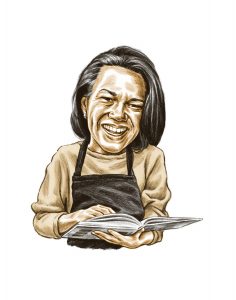 Toni Tipton-Martin
Toni Tipton-Martin
Austin, Texas, journalist Toni Tipton-Martin’s African American cookbook compilation, The Jemima Code, released last September, is proof that its author is one of today’s smartest thinkers on food and culture. Her project started thirty years ago, when she chanced upon a 1939 cookbook by New Orleans chef Lena Richard. Afterward, Tipton-Martin began scouring secondhand bookstores, antiques dealers, and, eventually, eBay for little-known cookbooks by African American women. “My mission was to find voices, to see what other women had to say,” she explains. Throughout her research Tipton-Martin found unheralded chefs whose repertoires ranged from lobster to breads to canapés. All told, the book is a compendium of more than 150 cookbooks that illuminates the often-unrecognized contributions of African American cooks. “I want to encourage African Americans to reclaim the cultural heritage of our dishes,” she says. “And reclaim those dishes all the way back to Africa.” Tipton-Martin is now at work on a modern cookbook—with recipes adapted from the voices she found.
The Neighborhood Artist
David Landis
 If you’ve seen the stainless-steel sculpture of an endangered northern white rhino on the Atlanta BeltLine near Inman Park, then you know the work of David Landis. The sculptor, who welds and casts in a studio near Turner Field, is one of the South’s most prolific public artists, with installations in libraries, gardens, and hotels throughout Atlanta and elsewhere. Though animals are a common theme, Landis’s primary goal is to make art that is both beautiful and emotionally powerful—and that captures attention. “This world we’re in now—cell phones and everything—if you can grab someone for a minute and actually make them feel something, that’s pretty rewarding,” he says. Landis is currently finishing up work on thirty-three gleaming, oversize oak leaves—one for each species in Georgia—for the BeltLine, and sculpting a series of endangered birds for a children’s hospital in Palo Alto, California. When he isn’t in his studio, you’ll find him hiking with his family at Sweetwater Creek State Park, or driving around with his sidekick, a four-year-old Catahoula mix named Baxter. “I’m a big lover of the outdoors and space,” Landis says. “It’s a needed source of rejuvenation.”
If you’ve seen the stainless-steel sculpture of an endangered northern white rhino on the Atlanta BeltLine near Inman Park, then you know the work of David Landis. The sculptor, who welds and casts in a studio near Turner Field, is one of the South’s most prolific public artists, with installations in libraries, gardens, and hotels throughout Atlanta and elsewhere. Though animals are a common theme, Landis’s primary goal is to make art that is both beautiful and emotionally powerful—and that captures attention. “This world we’re in now—cell phones and everything—if you can grab someone for a minute and actually make them feel something, that’s pretty rewarding,” he says. Landis is currently finishing up work on thirty-three gleaming, oversize oak leaves—one for each species in Georgia—for the BeltLine, and sculpting a series of endangered birds for a children’s hospital in Palo Alto, California. When he isn’t in his studio, you’ll find him hiking with his family at Sweetwater Creek State Park, or driving around with his sidekick, a four-year-old Catahoula mix named Baxter. “I’m a big lover of the outdoors and space,” Landis says. “It’s a needed source of rejuvenation.”
The Head Liner
Gigi Burris
Gigi Burris fell in love in Paris—with hats. Before visiting the city in 2008, the twenty-eight-year-old sixth-generation Floridian—who spent her childhood immersed in her mother’s fashion magazines and learning to sew at her grandmother’s side—had been studying clothing at Parsons School of Design in New York City. “Hats are a great way to execute a look,” Burris says, “and I’d always included them in my wardrobe. But it wasn’t until Paris that I realized I really wanted to pursue millinery.” Despite her European muse, Burris’s Sunshine State heritage shows up in everything from the materials she employs (alligator skins and pheasant feathers collected by her father from her family’s property) to her shapes and color choices (the watercolorist Charles E. Burchfield’s mystical swamp paintings, reminiscent of the landscape near her home, inspired her spring/summer 2016 collection).One of her most popular toppers, the Nell—an asymmetrical fedora with sweeping lines—is a tribute to her great-grandmother. And whether you’re headed to Churchill Downs wearing Burris couture or just down the street to lunch sporting her Ana Cap à la Taylor Swift, Burris wants you to feel good wearing one of her designs. “A hat should never feel forced,” she says. “You should feel confident. You should feel beautiful.”

Photo: Tara Donne
Gigi Burris in her Manhattan studio.
The Driving Force
Cam Newton

Play Maker
PLAY MAKER
Panthers quarterback Cam Newton off the field.
Cam Newton already has one of the most impressive résumés in football: Heisman Trophy winner, national champion, first overall pick in the NFL draft, and a two-time Pro Bowler. But the twenty-six-year-old Carolina Panthers superstar quarterback has his sights set on adding a few more accolades in the near future—like Super Bowl champion and NFL MVP. Newton grew up in Atlanta, led the Auburn Tigers to the NCAA title in 2011, and now keeps the crowds roaring in Charlotte. “I feel blessed to call the South home,” he says. “There is a sense of community, refined values, and a ‘gentleman-like’ culture that I value.” In his fifth year in the league, he has emerged as one of the NFL’s premier players and the unquestioned leader of one of its best teams, which is what happens, he says, “when preparation meets opportunity.” And he’s pulled that off without losing his exuberant sense of fun, from his tradition of giving each touchdown ball to a child in the stands to his creative post-score dances to his equally inspired post-game attire. Off the field, Newton has grown into an impressive leader as well through the Cam Newton Foundation, which works to promote education, fitness, and community service among at-risk youth in the Charlotte and Atlanta areas. “You’ve got to have all three to be successful,” he says. “In life, it’s about having balance.”
The All-Star Designers
Louisa Pierce & Emily Ward
In just two years, the Nashville-based interior designers Louisa Pierce and Emily Ward have quietly built a word-of-mouth client list that includes the likes of model/musician Karen Elson and Kings of Leon rocker Caleb Followill and his wife, supermodel Lily Aldridge, not to mention a certain A-list Hollywood actor and a chart-topping pop star. But their design philosophy remains decidedly down-to-earth. “Function is huge,” says Pierce, who grew up in Birmingham, Alabama. “We like things to feel very luxurious but still very comfortable.” The discerning pair scour everything from antiques stores and high-end home-goods boutiques to flea markets and thrift shops for unique finds—such as a stunning art deco crystal chandelier they scored for just 150 bucks—to create a layered, lived-in look that blends modern with traditional. “When our clients move in, it should look like they have lived there for five years,” Ward says. And the two aren’t afraid of a Target run, either. “I think nowadays designers are spending so much money,” Pierce says. “It’s just insane. We are serious bargain hunters. It’s a puzzle for us.”
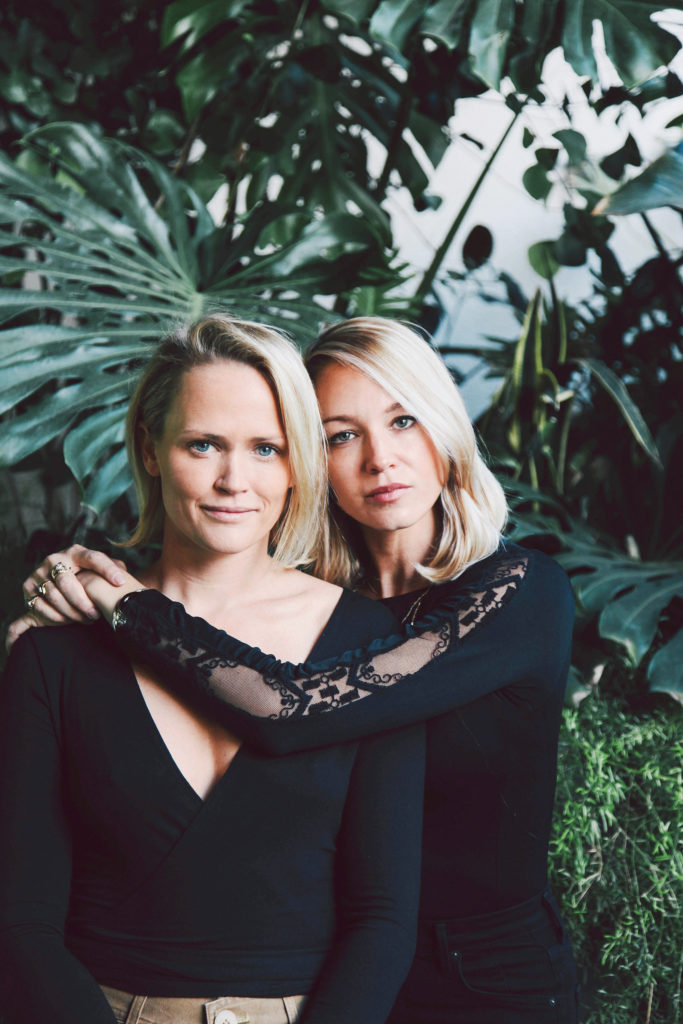
Photo: Amy Dickerson
Emily Ward (left) and Louisa Pierce at their Los Angeles office.
Contributors: Nic Brown, Monte Burke, Vanessa Gregory, Mike Grudowski, David Hanson, Matt Hendrickson, Elizabeth Hutchison, Jessica Mischner, and Jed Portman.






